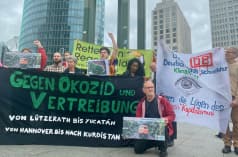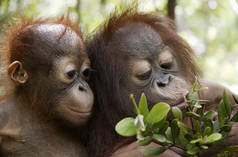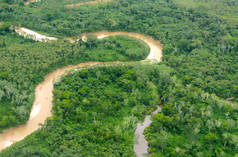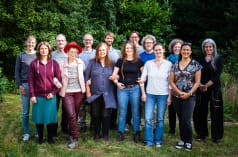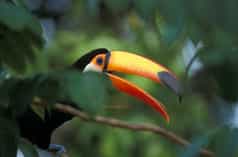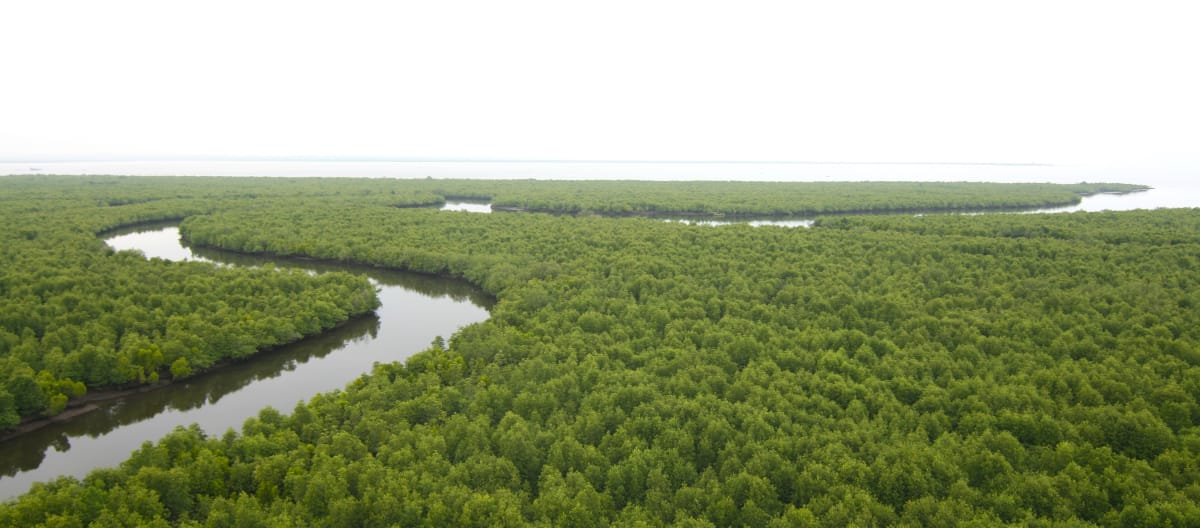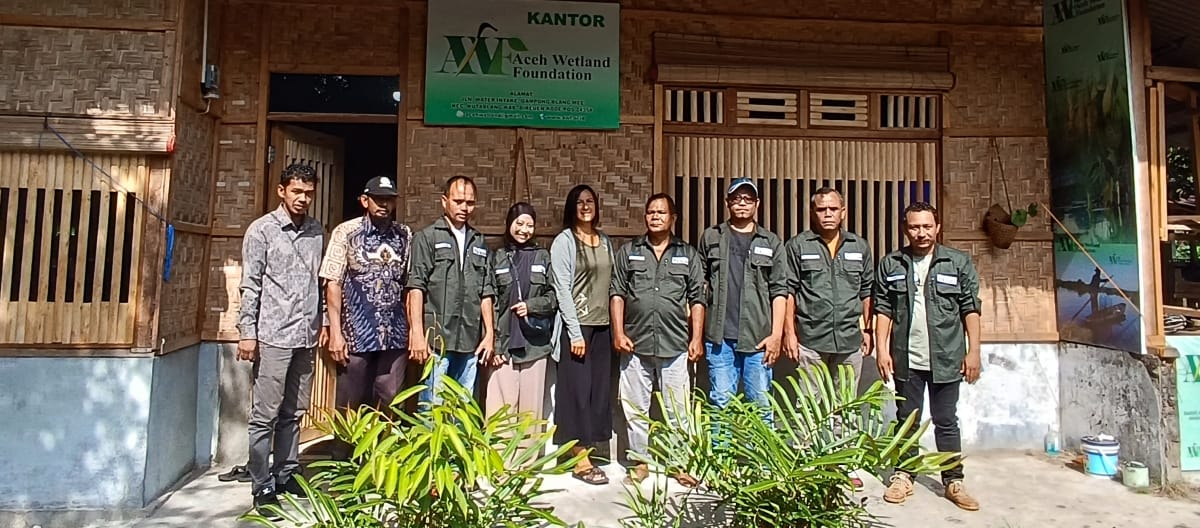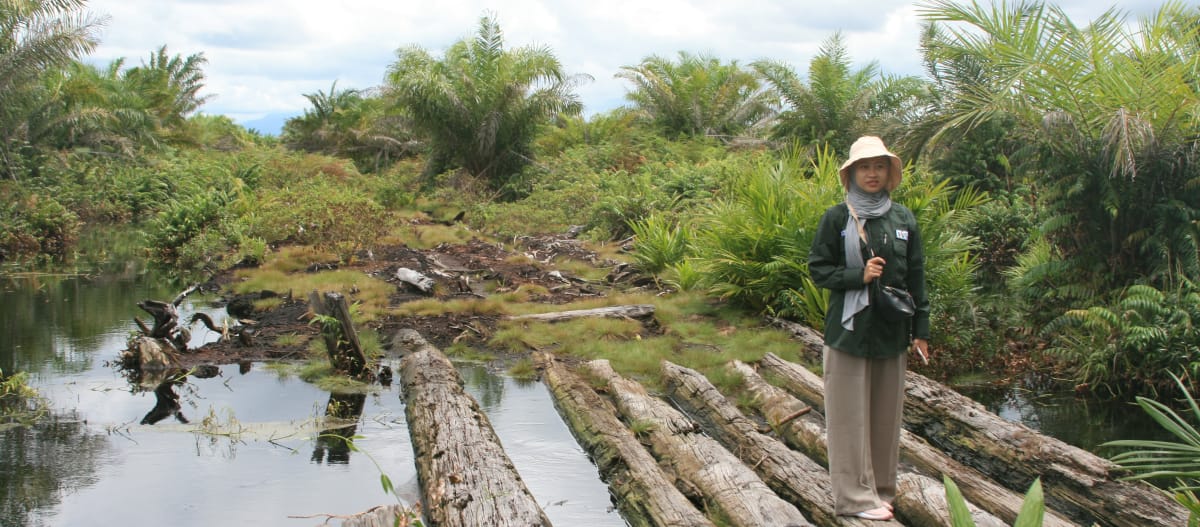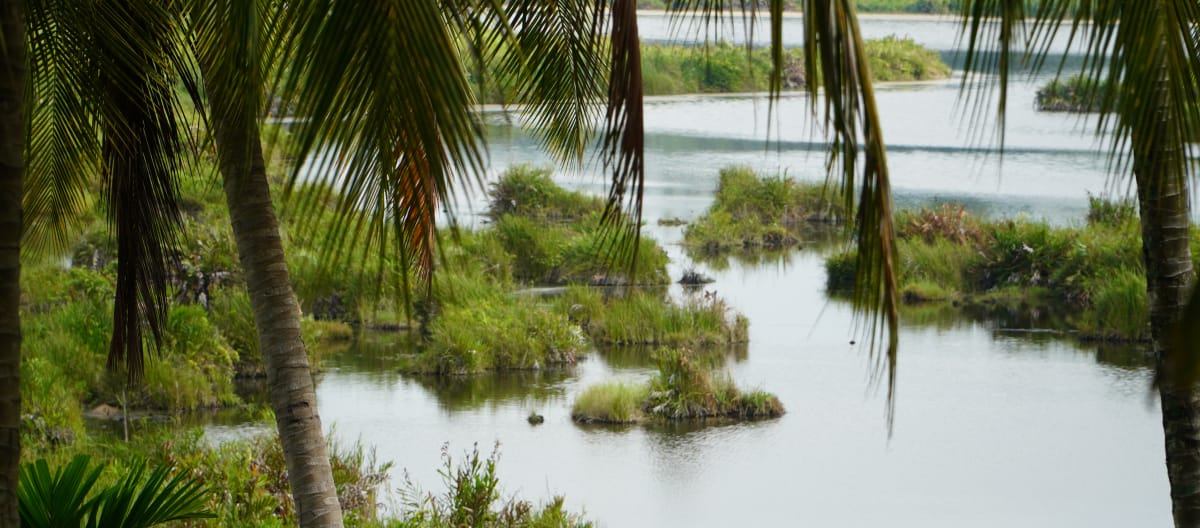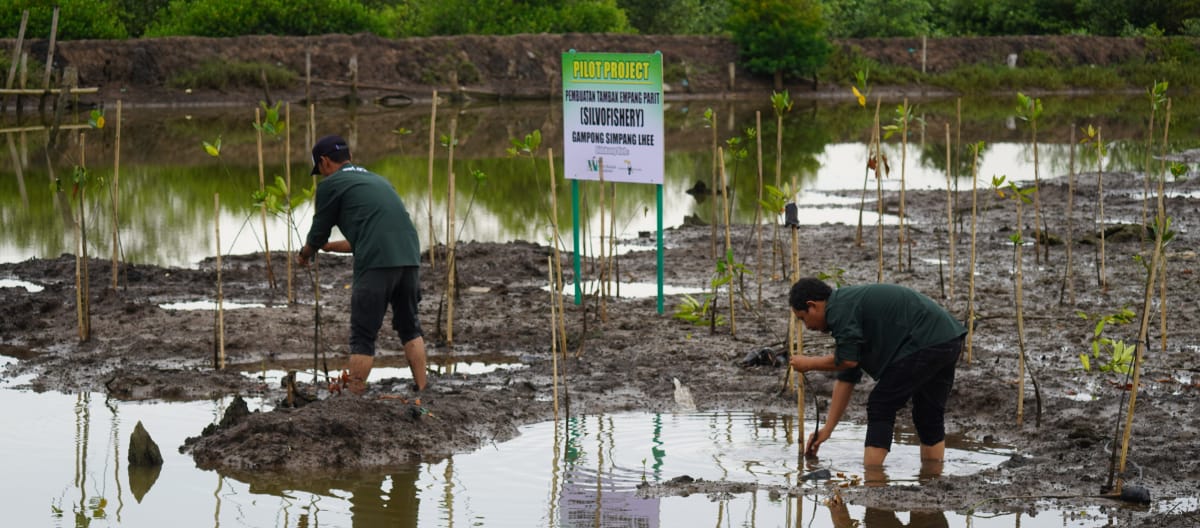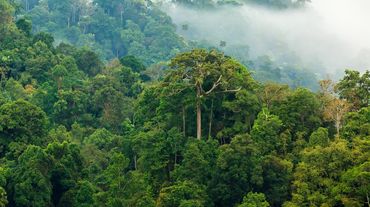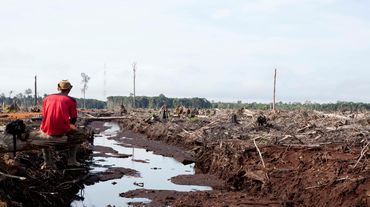Mangroves, peat bogs, swamps: protecting Aceh’s wetlands
The Aceh Wetland Foundation is working to protect Indonesia's mangrove forests, peat bogs and swamps.
Project Overview
Project FocusEcosystems / Rainforest Defenders
Project Objective protecting wetlands, securing Indigenous and forest rights, uncovering environmental crimes
Activities advocacy, campaigns, research, raising awareness, education, resistance against environmental crimes
Mangrove forests on the east coast of Aceh
Mangroves are trees and shrubs of various species that can survive in salt water, forming fascinating forests along tropical coastlines. They soak up water like a sponge, act as a bulwark against ocean storms and store vast amounts of carbon. Their root systems, which rise like stilts from the muddy ground, provide shelter for many species of animals. Indonesia had the world’s most extensive mangrove forests until the devastating onset of deforestation four decades ago.
“Although the importance of mangrove forests was well known, most have been cut down since then,” said Yusmadi Yusuf, director of our partner organization, the Aceh Wetland Foundation. “Two companies alone hold logging permits for 32,000 hectares – nearly two-thirds of Aceh’s total mangrove area.”
The valuable hardwoods – meranti, for example – were nicknamed ‘Japanese wood’ because they were mainly exported to Japan. Thousands of hectares of mangrove forests disappeared as a result and aquacultures were established in their place. Experts confirm that the deadly effects of the tsunami of December 26, 2004, which claimed hundreds of thousands of lives, were significantly worsened by the decimation of the protective mangrove forests.
Aceh Wetland Foundation: Indigenous people, scientists, journalists
The Aceh Wetland Foundation aims to preserve the last wetlands – mangroves, peat bogs and swamps – in the province of Aceh and to restore destroyed areas. There is still hope: The mangrove forest of the Indigenous village of Teulaga Tujuh, for example, is particularly biodiverse and a veritable fortress. Teungku Tahee, the Indigenous leader of Teulaga Tujuh, is very proud of it. The scientist Dr. Rita Andini from the National Agency for Research and Science (BRIN) confirms the abundance of species. “Rhizophora Mucronata thrives here,” she writes – a species with many benefits: erosion control, timber, food.
Since 2010, the Aceh Wetland Foundation has been working with communities on the east coast to combat the destruction of mangrove forests.
Empowering Indigenous communities is a key element in protecting the mangroves.” -Yusmadi Yusuf
For example, the village youth of Simpang Lhee in Langsa have been trained as rangers: The young people routinely patrol their mangrove forest to protect it from intruders.
“In 2011, together with the environmental organization WALHI Aceh and the marine conservation group KuALA, we were able to prevent the company PT. Starminera Prima Abadi from mining sea sand along the mangrove forests near Langsa,” says Yusmadi Yusuf.
But protected forests are also at risk, and not just because of the profits to be made from tropical timber and charcoal. A number of carbon traders are currently targeting Aceh’s mangrove forests. “We are very concerned about this development,” say our colleagues at the Aceh Wetland Foundation.
We want to protect the mangroves as carbon sinks and ecosystems, not for greenwashing, but for the people’s sovereignty over their land and forests.”
Tripa and Babahrot peat forests: only 10 percent are still intact
The carbon-rich peat forests of Tripa were once famous as the home of the largest population of Sumatran orangutans. The forests originally covered 60,657.29 hectares. “But today, palm oil companies control almost the entire peat forest area of Tripa and Babahrot. All that remains is poverty and endless land disputes,” says the village head of Pulo Kruet, Darul Makmur district, Nagan Raya regency. Thousands of orangutans have disappeared with the peat forests or died in the slash-and-burn.
90 percent of the former peat bogs are now oil palm plantations. “Only 5,000 hectares of peat forest remain,” says renowned environmental journalist Junaidi Hanafiah of Mongabay.
The destruction of the Tripa peat forests reached an extreme in 2012, when the company PT. Kallista Alam torched 1,000 hectares. In 2014, the Meulaboh court ordered the company to pay a fine of 366 billion rupiah for the destruction and to fund restoration. The company spent ten years stonewalling the ruling and only began making payments at the end of 2023.
See also our 2012 petition against palm oil in the Tripa peat forests, the last refuge of orangutans.
“New land is being cleared in the former Kallista Alam concession, which is now a peat reserve. Even the ministry’s information board has been removed,” said Syukur Tadu, an environmental activist in Nagan Raya.
Aceh Wetland Foundation remains committed to prosecuting environmental crimes in the Tripa Babahrot swamp. Together with the forest police and volunteers, they patrol the burned forest areas.
The Indigenous people of Paya Nie live off the swamp and keep it safe
“We Indigenous people from two settlements have agreed to protect the Paya Nie swamp according to our traditional Adat law. Agriculture and plantations are not allowed,” says Said Fakhrurrazi, the head of the Teungku Chik Dimanyang Mukim settlement. The law also prohibits hunting birds and fishing with electricity and poison. The nine villages around the Paya Nie swamp also recognize Adat law.
The example of Nepenthes rigidfolia shows how unique Paya Nie’s biodiversity is: Dr. Cut Azizah of the Almuslim University in Bireuen has documented that the critically endangered pitcher plant grows there.
However, the Indigenous Paya Nie community must continue to fight, as their swamp is still under threat: The Ministry of Public Works plans to convert the Paya Nie swamp into a reservoir for Seuke Pulot’s irrigation systems. This massive project has the potential to destroy Paya Nie’s biodiversity.
Enforcing Indigenous law against state and business interests is challenging because of the question of authority: There is the state, which does not want to give up its control over the land – there are the Indigenous people who demand that their human rights be respected – and then there are the corporations, which wield the real power.
Aceh Wetland Foundation’s goal is to have all of Paya Nie recognized as Indigenous territory, which it sees as the only way to ensure the wetland’s protection. For this to happen, the state must recognize the rights of the Indigenous people to their land. Meanwhile, we will continue to reforest the degraded swamps.
Rainforest Rescue supports Aceh Wetland Foundation in
- protecting and reforesting the mangroves on the east coast
- patrolling the Tripa and Babahrot swamps, investigating environmental crimes
- promoting the protection of the Paya Nie swamp by Indigenous people
the importance of mangrove forests
FAO (1985): Pengelolaan Mangrove di Thailand, Malaysia dan Indonesia https://pdf.usaid.gov/pdf_docs/Pnaav657.pdf
At the time, Aceh had 50,000 hectares of mangrove forests.
Two companies alone hold logging permitsThese were PT Bakau Selat Malaka with 20,000 hectares and PT Kalindi Langsa with 12,000 hectares. Other companies, PT. Naridu and the state-owned PT. Inhutani III, held logging permits.
Starminera Prima Abadi: Exporting sand to Singapore https://www.tribunnews.com/regional/2010/05/08/presiden-belum-terbitkan-izin
There are new plans to allow sand mining again. According to the Aceh Wetland Foundation, the protected mangrove forests of Teulaga Tujuh are once again in danger.
protected forestsAccording to the Ministry of Environment and Forestry, 9,876.39 hectares of mangroves are protected in the districts of Aceh Timur (4,797.25 hectares), Aceh Tamiang (4,216.33 hectares) and Kota Langsa (862.81 hectares).
